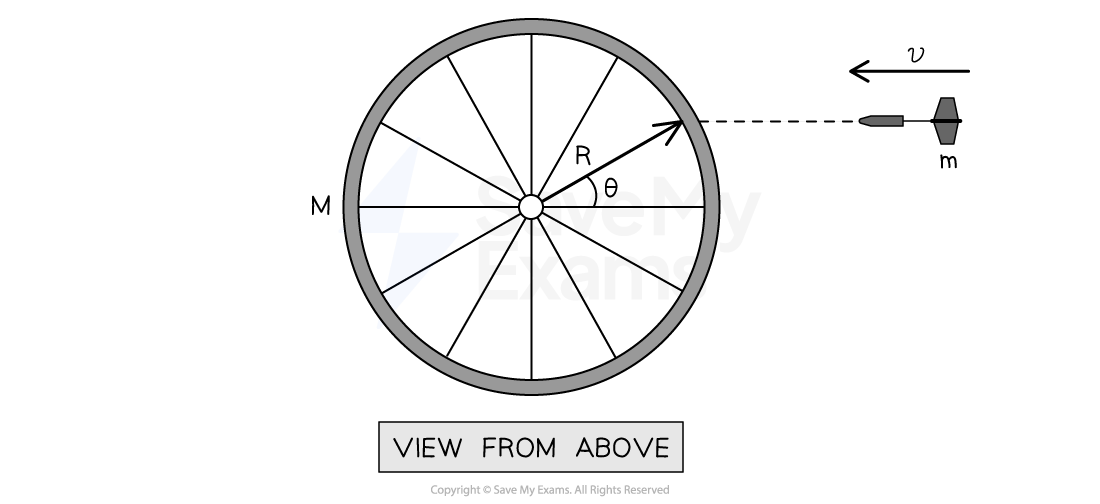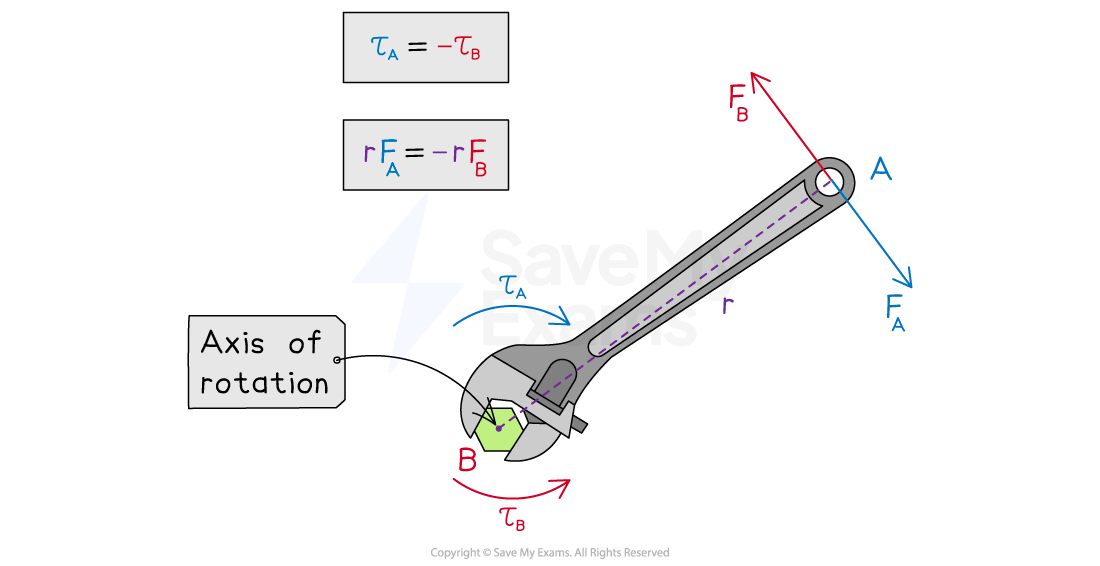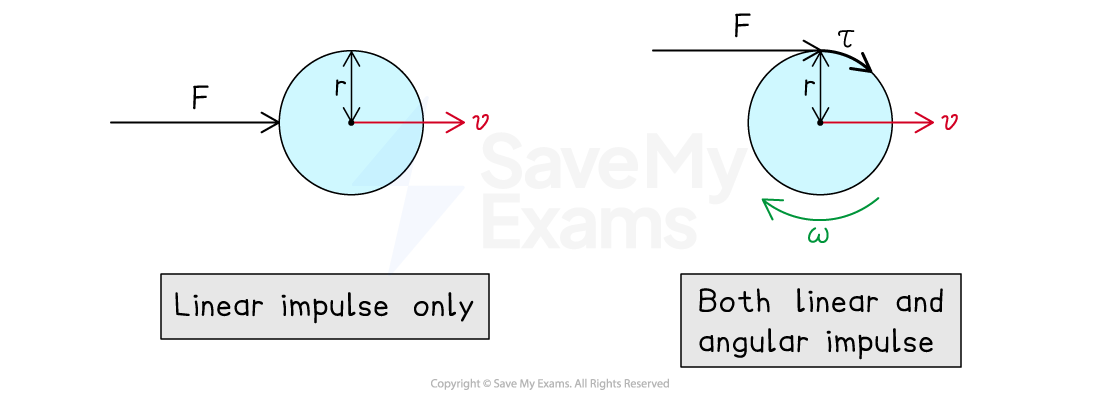Conservation of Angular Momentum (College Board AP® Physics 1: Algebra-Based): Study Guide
Conservation of angular momentum
As with linear momentum, angular momentum is always conserved
The principle of conservation of angular momentum states:
The total angular momentum of an isolated system remains constant unless acted on by a net external torque
Therefore, for an interaction between objects in an isolated system:
The total angular momentum before the interaction is equal to the total angular momentum after the interaction
Mathematically, this can be written as:
Where:
= initial angular momentum (before the interaction), in
= final angular momentum (after the interaction), in
Worked Example
A bicycle tire of mass and radius
is mounted horizontally, allowing it to spin about a frictionless axis. The tire is initially at rest before a dart of mass
strikes it with velocity
at an angle of
as shown in the diagram.

The rotational inertia of the dart and wheel is .
Derive an expression for the angular velocity of the tire after the dart strikes it in terms of ,
,
and
.
Answer:
Step 1: Analyze the scenario
Before the collision:
the tire of mass
is stationary
the dart of mass
moves with linear velocity
After the collision:
the tire and dart move as one rigid body of rotational inertia
and angular velocity
Step 2: Determine the angular momentum of the dart
Just before the dart strikes the tire
it is located at a distance of
from the axis of rotation
its velocity makes an angle of
with this distance
Therefore, using the equation for a particle's angular momentum, the dart can be modeled as a particle with an initial angular momentum of:
Step 3: Determine the angular momentum of the dart-tire system
When the dart strikes the tire, they become one system with an angular momentum of:
Step 4: Apply conservation of angular momentum
Conservation of angular momentum: the total angular momentum before the collision = the total angular momentum after the collision
Step 5: Rearrange for the angular velocity
Angular impulse & total angular momentum
Conservation of angular momentum is a direct result of Newton's third law, which states:
The angular impulse exerted by object (or system) A on object (or system) B is equal and opposite to the angular impulse exerted by object (or system) B on object (or system) A
If the total angular momentum of a system changes, that change is equivalent to the angular impulse exerted on the system
Where:
angular impulse is measured in
= change in angular momentum of the system, in
When two objects, A and B, rotating about the same axis interact:
object A exerts a torque on object B of magnitude
object B exerts a torque on object A of magnitude
the torques are equal in magnitude and opposite in direction
the torques, and therefore angular impulses, only act for the duration of the interaction
Since the angular impulse is delivered during the interaction, the value of time
is equal for each object, hence the change in angular momentum is:
Therefore, the change in angular momentum of A is equal to the change in angular momentum of B:
Third law torque pair during an interaction

Examiner Tips and Tricks
Make sure you understand that Newton's third law in rotational form only applies when a force is applied at a distance from a rotational axis. As a result, the Newton's third law force pair acts at the same point (i.e. at a distance
). For example, consider a sphere:
when a force is exerted along its rotational axis, only a linear impulse will act about its center of mass
when a force is exerted along its circumference (i.e. a distance
from its rotational center), both a linear impulse and an angular impulse will act about its center of mass


Unlock more, it's free!
Did this page help you?